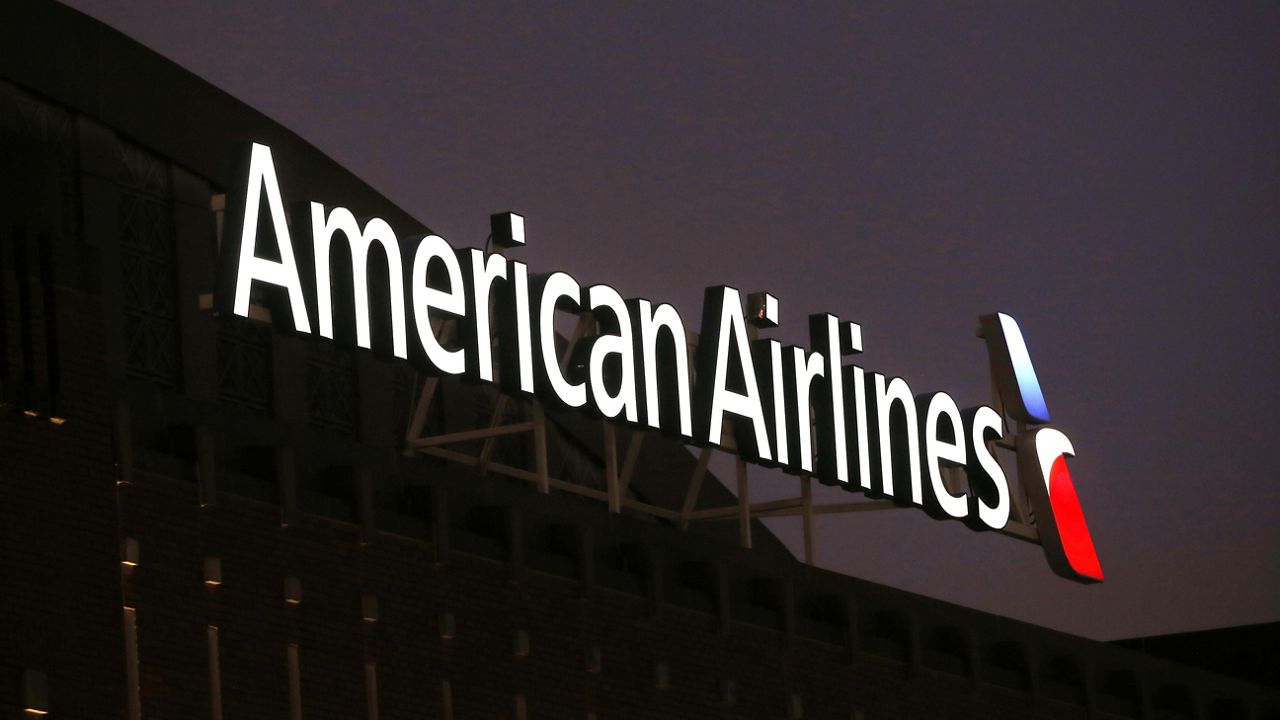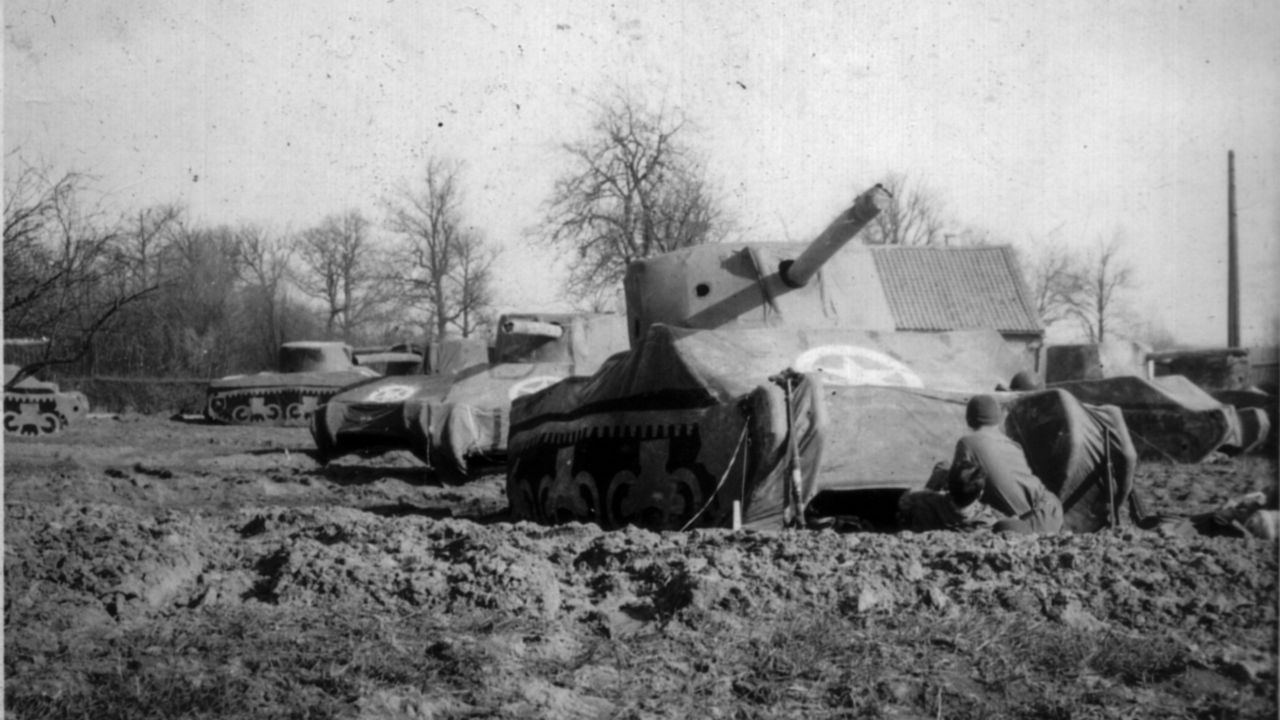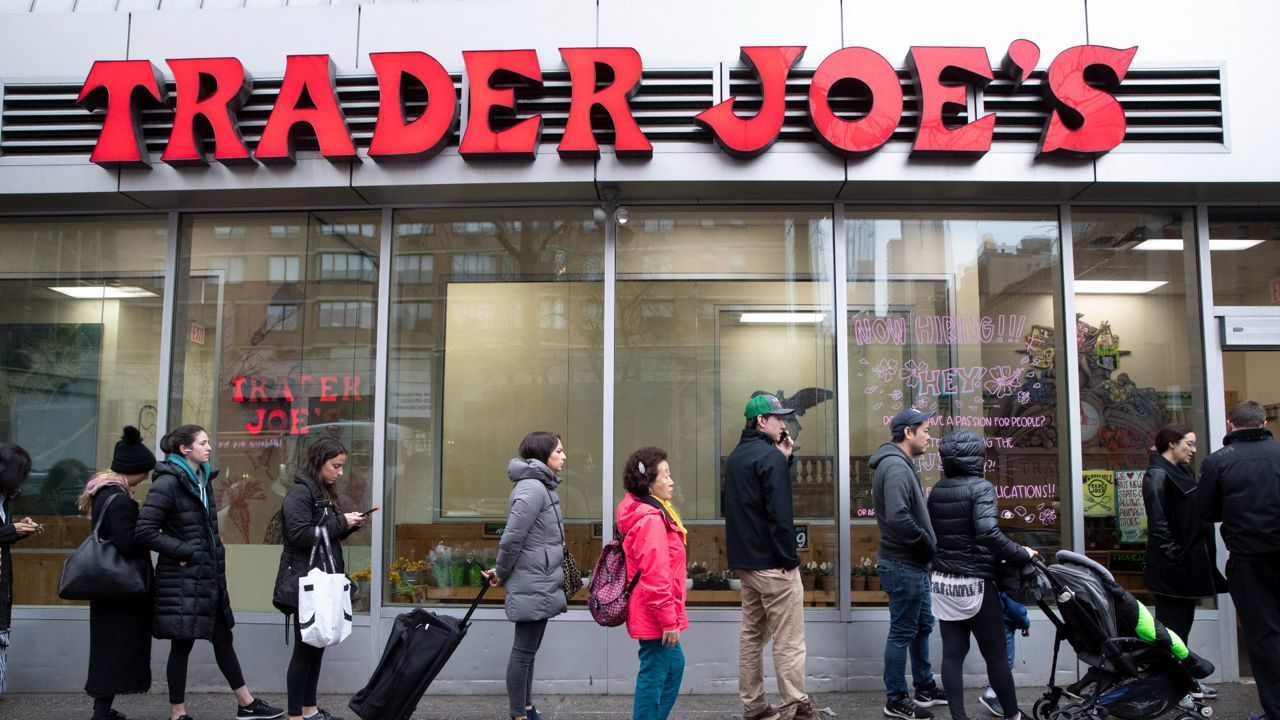TEXAS – On Tuesday, Lebanon’s capital city of Beirut was rocked by a massive explosion at the city’s port. Thousands were injured and at least 100 people are known to have died so far. While citizens and government officials there are still evaluating the extent of the damage, others are pointing out similarities between this disaster and one that happened in a small Texas town in the 1940s.
What You Need To Know
- Both disasters involved the same chemical: ammonium nitrate
- Texas disaster happened in 1947
- A ship carrying the chemical caught fire, exploded
On April 16, 1947, a French-owned cargo shipped called the SS Grandcamp exploded in the docks of Texas City, according to the Texas State Historical Association (TSHA).
The ship was carrying ammonium nitrate, the same chemical used in the Oklahoma City bombing and the chemical believed to have caused the Beirut explosion. The chemical has been used in wartime explosives but is also used to make fertilizer.
Historians say when the Grandcamp exploded, fire and debris spread throughout the small town of 15,000, damaging 1,000 businesses and homes.
The port where the ship was docked as well as the nearby Monsanto Chemical Company were also both destroyed along with many other businesses. It’s also reported that the explosion caused a 15-foot tidal wave.
RELATED | Lebanon Puts Port Officials on House Arrest After Explosion Kills At Least 100 People
As the fires spread, a second ship called the SS High Flyer, which was also carrying ammonium nitrate, caught fire. Historians say crews were able to tow the ship 100 feet from the already damaged dock before it too exploded in the early hours of April 17.
Over 500 people were known to have died in the disaster but it is likely there were more. According to TSHA, employment records from the Monsanto Chemical Company were destroyed in the explosion, many of the dock workers were travelers, and most of the bodies from the people closest to the docks were never recovered. At least 178 people were listed as missing and 63 bodies were buried without being identified.
Thousands of people were injured and temporary hospitals, morgues, and shelters had to be set up in order to respond to the disaster.
Below is a gallery of images taken of the Texas City disaster, some of them may be considered graphic.
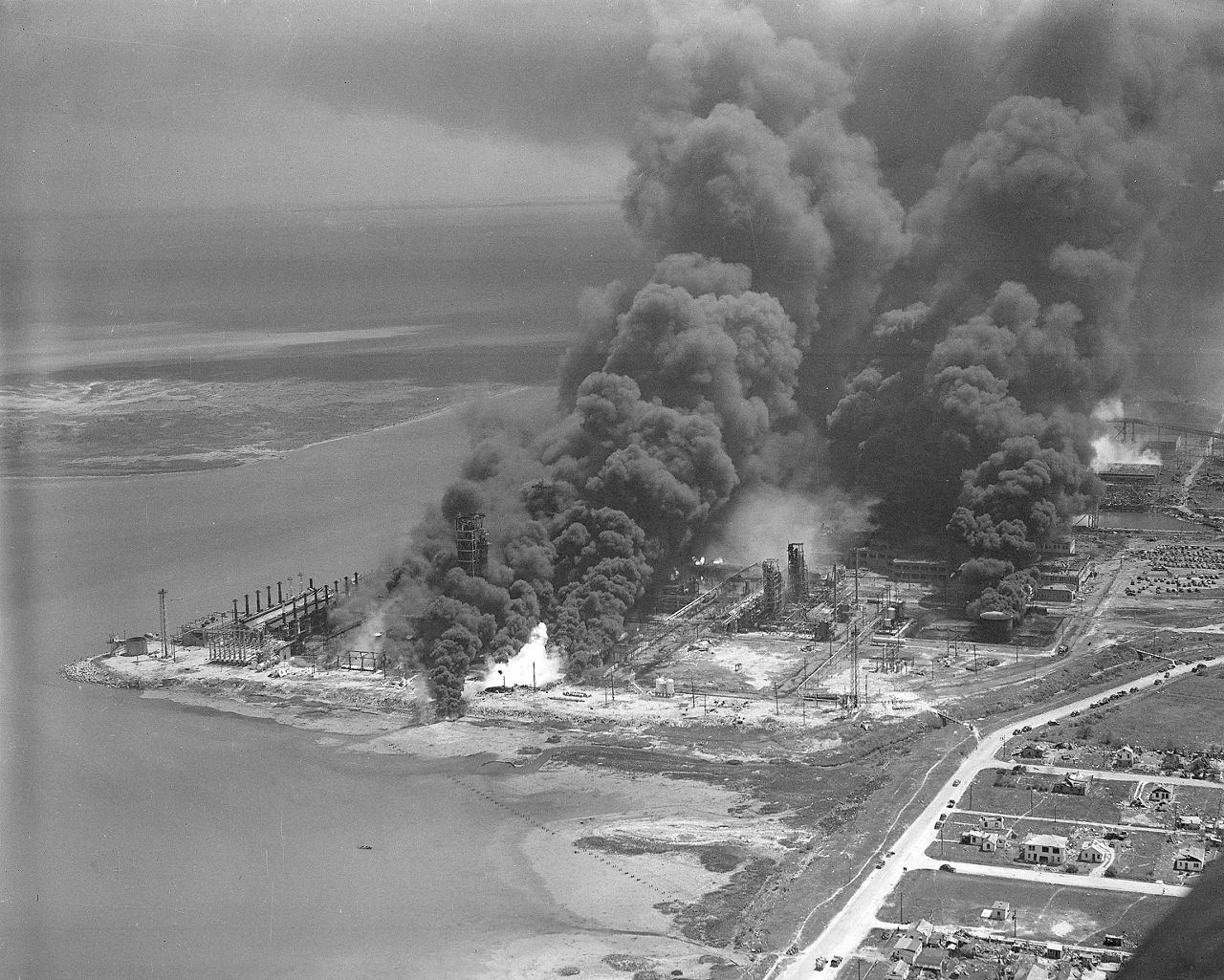
Aerial view of Texas City, Tex., April 16, 1947, after a French ship loaded with nitrate exploded in the harbor area, torching part of the city. (AP Photo/Carl E. Linde)
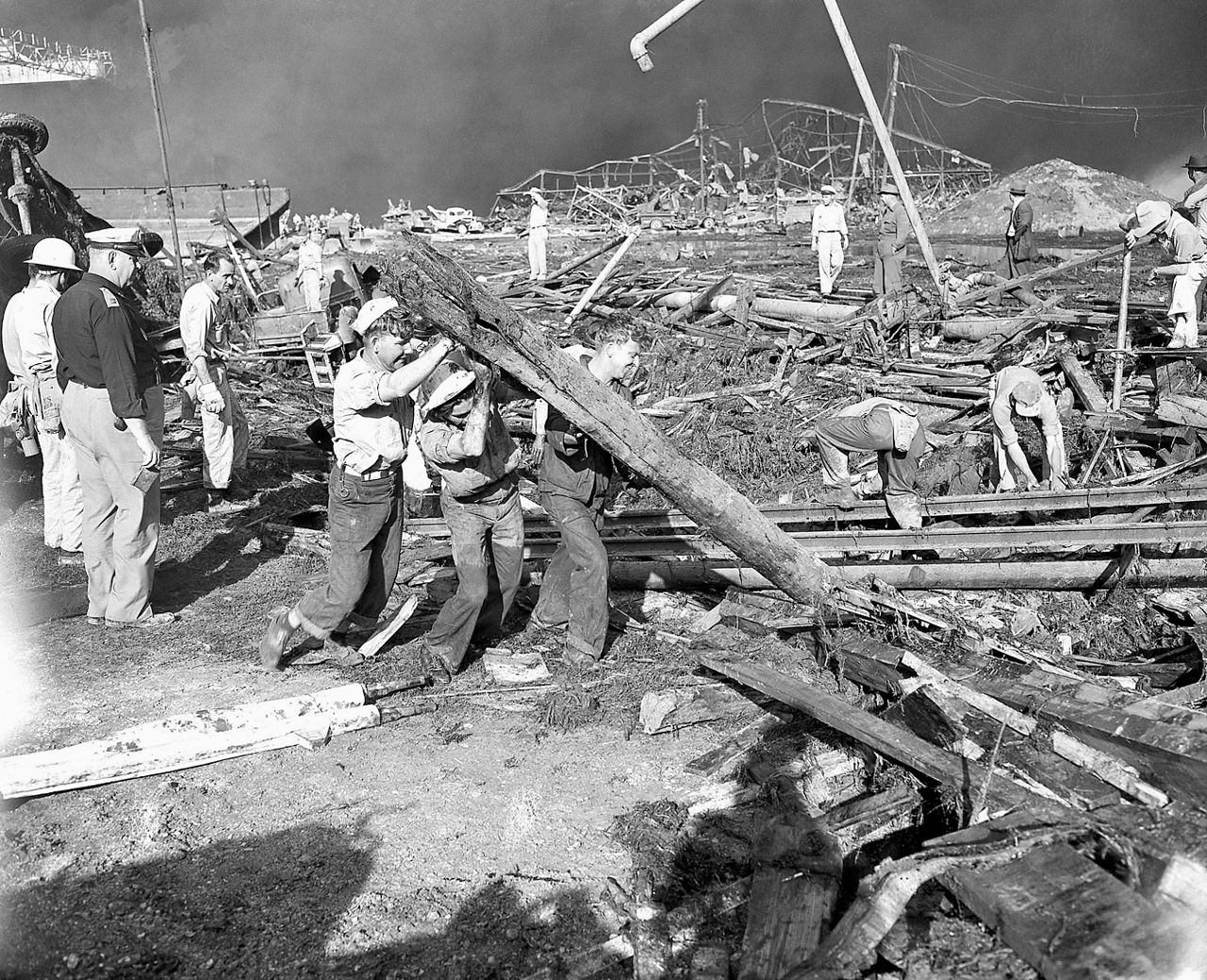
A group of Texas City rescue workers still in the area April 16, 1947 after the city was evacuated, lift a heavy beam as they continue a grim search through twisted masses of wreckage. Workers step through debris in their search for victims of a series of blasts that swept the city of 15,000. The disaster was one of the worst in Texas history. (AP Photo)
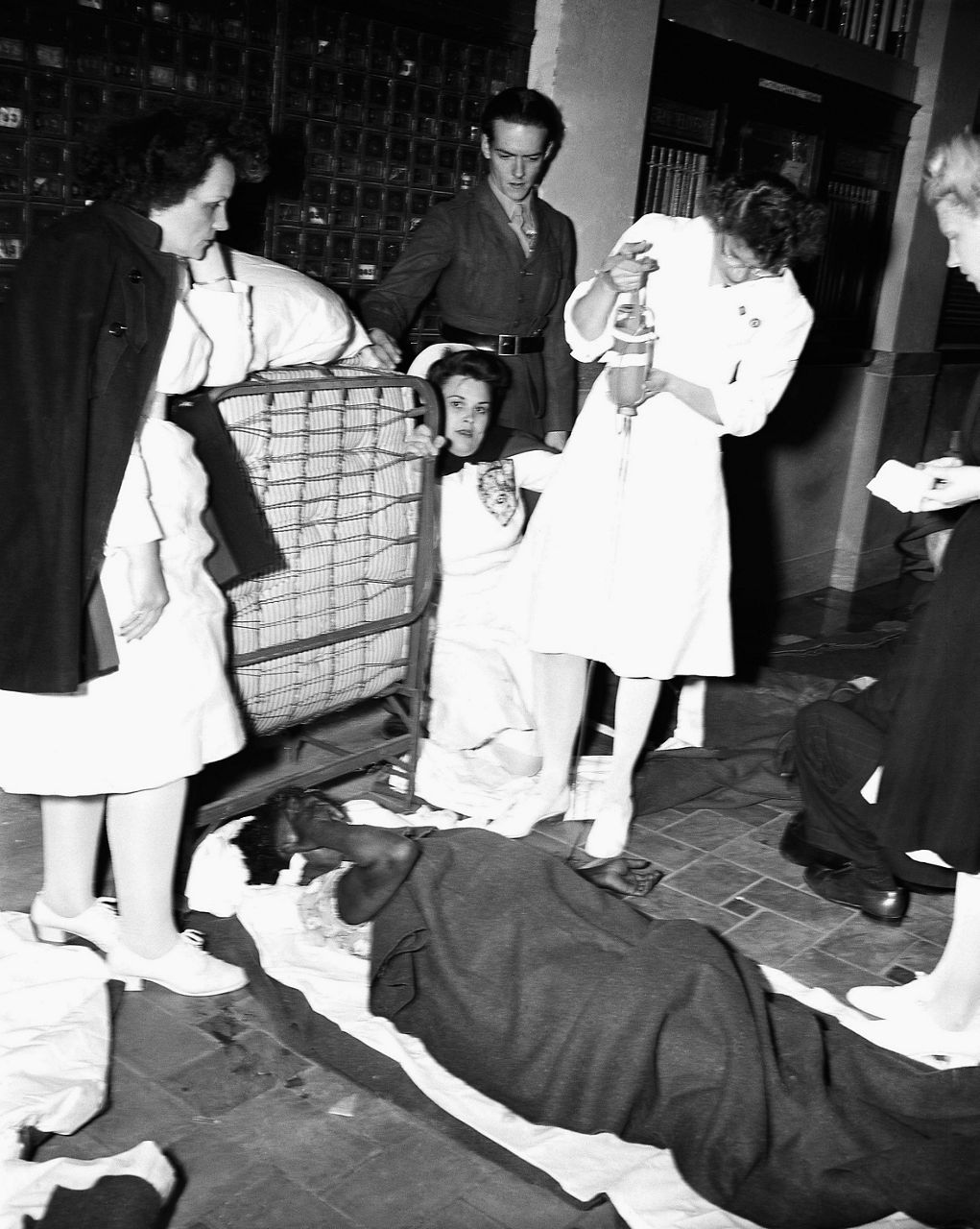
An unidentified nurse administers blood plasma to one of the hundreds injured in a fire, at a first aid station in Texas City, Tex., April 16, 1947. Hundreds were injured following a series of explosions and fires in the Texas gulfport city. (AP Photo/Carl E. Linde)
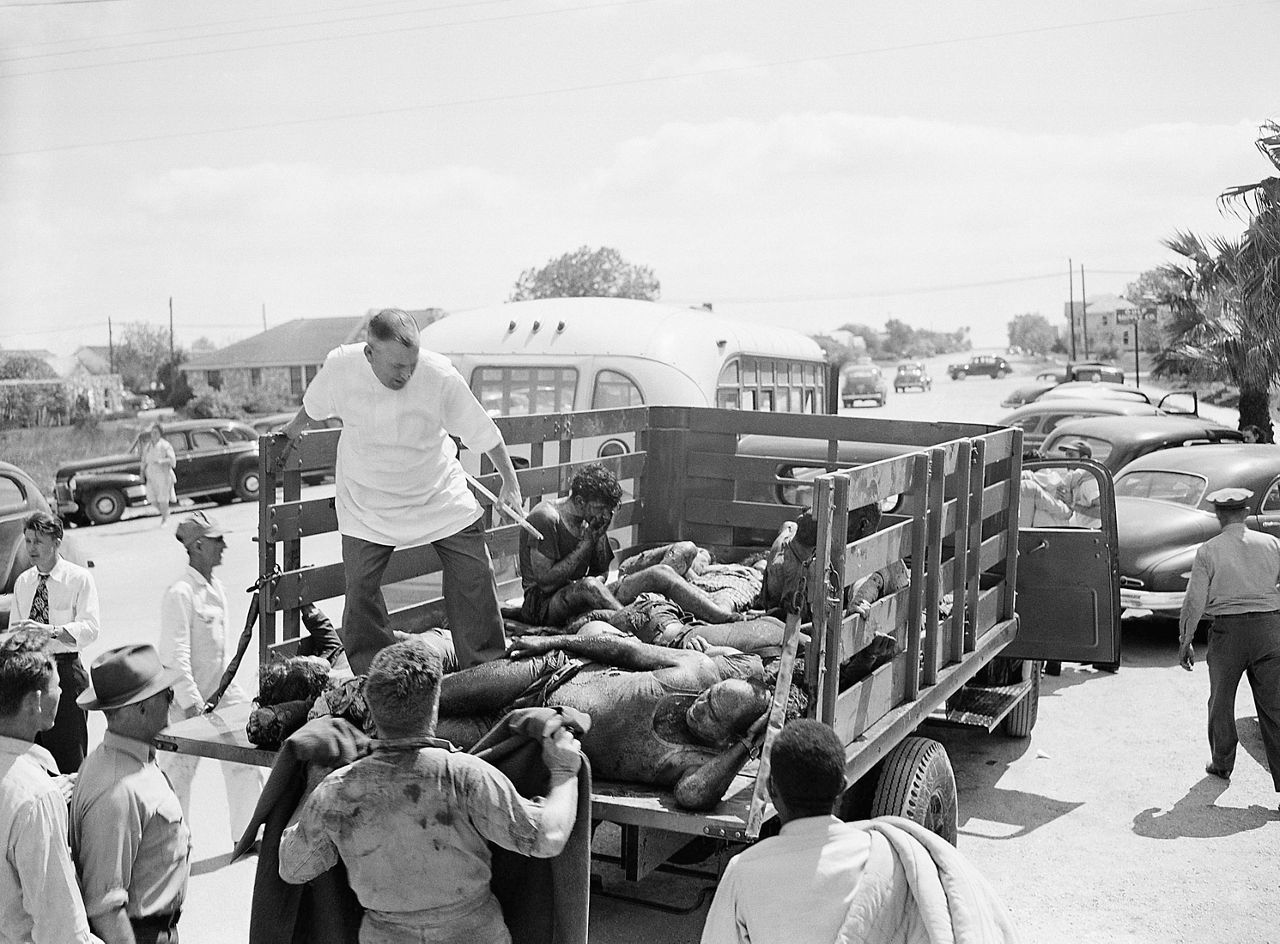
Almost every means of transport was being used April 16, 1947 to remove wounded from the scene of explosion and fires in Texas City, Texas.
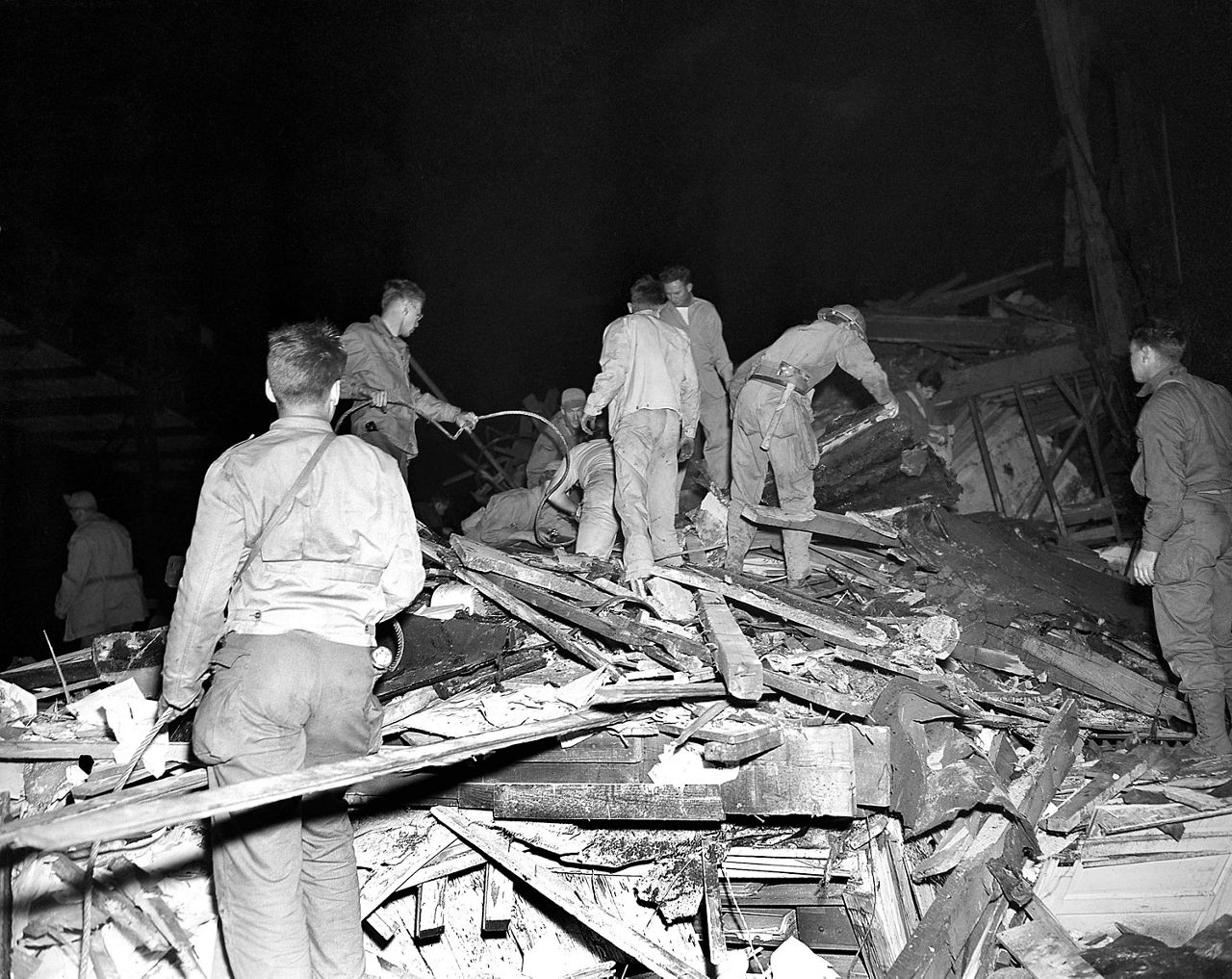
Rescue workers continue to probe the ruins along the Texas City, Tex., waterfront during April 16, 1947 as the search for the bodies of victims continues. Hundreds of corpses had already been counted and still others were being sought as the grim work continued because of fire and explosion at the Monsanto plant. (AP Photo)
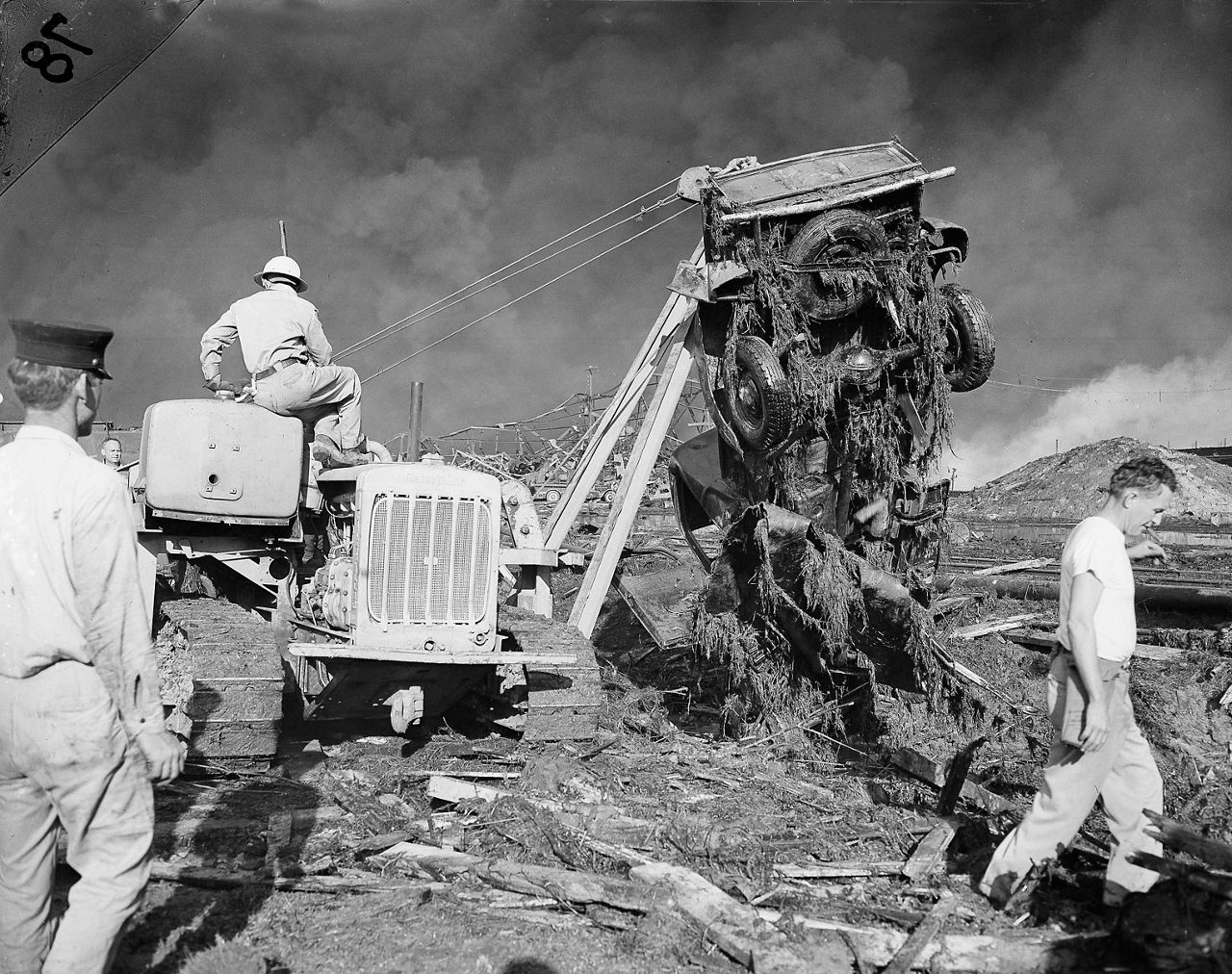
A portable bulldozer hoists a truck, loaded with fine debris, from the piles of rubble which litter the Texas City, Tex., waterfront area, April 16, 1947, following a series of disastrous fires and explosions which tore through the city of 15,000 following the explosion of a ship in the harbor. (AP Photo/Carl E. Linde)
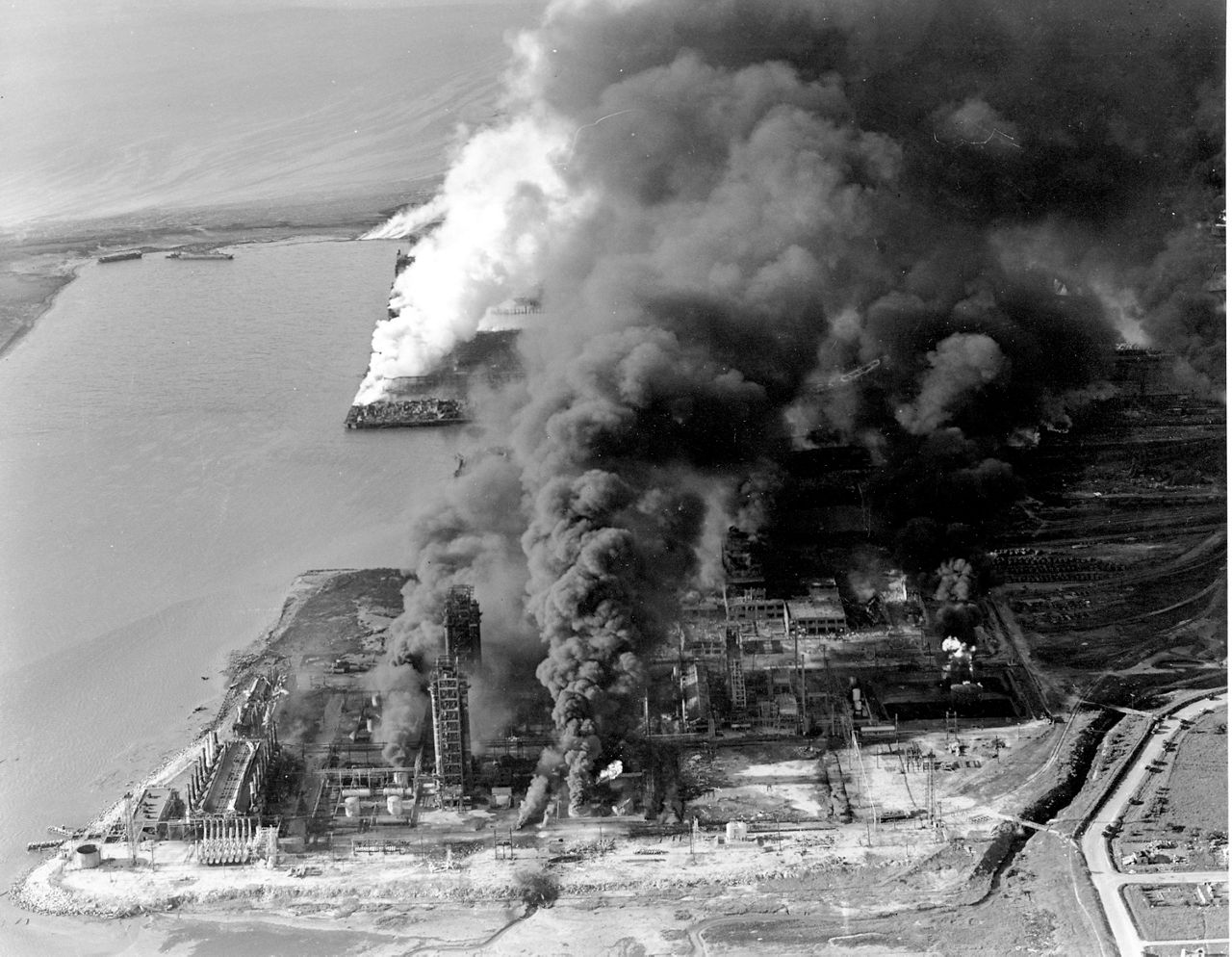
Refineries and oil storage tanks of the Monsanto chemical plant burn in the waterfront area in Texas City, Texas, on April 16, 1947. The disaster, caused by the explosion of the nitrate-laden French ship Grandcamp, caused 561 deaths. (AP Photo)
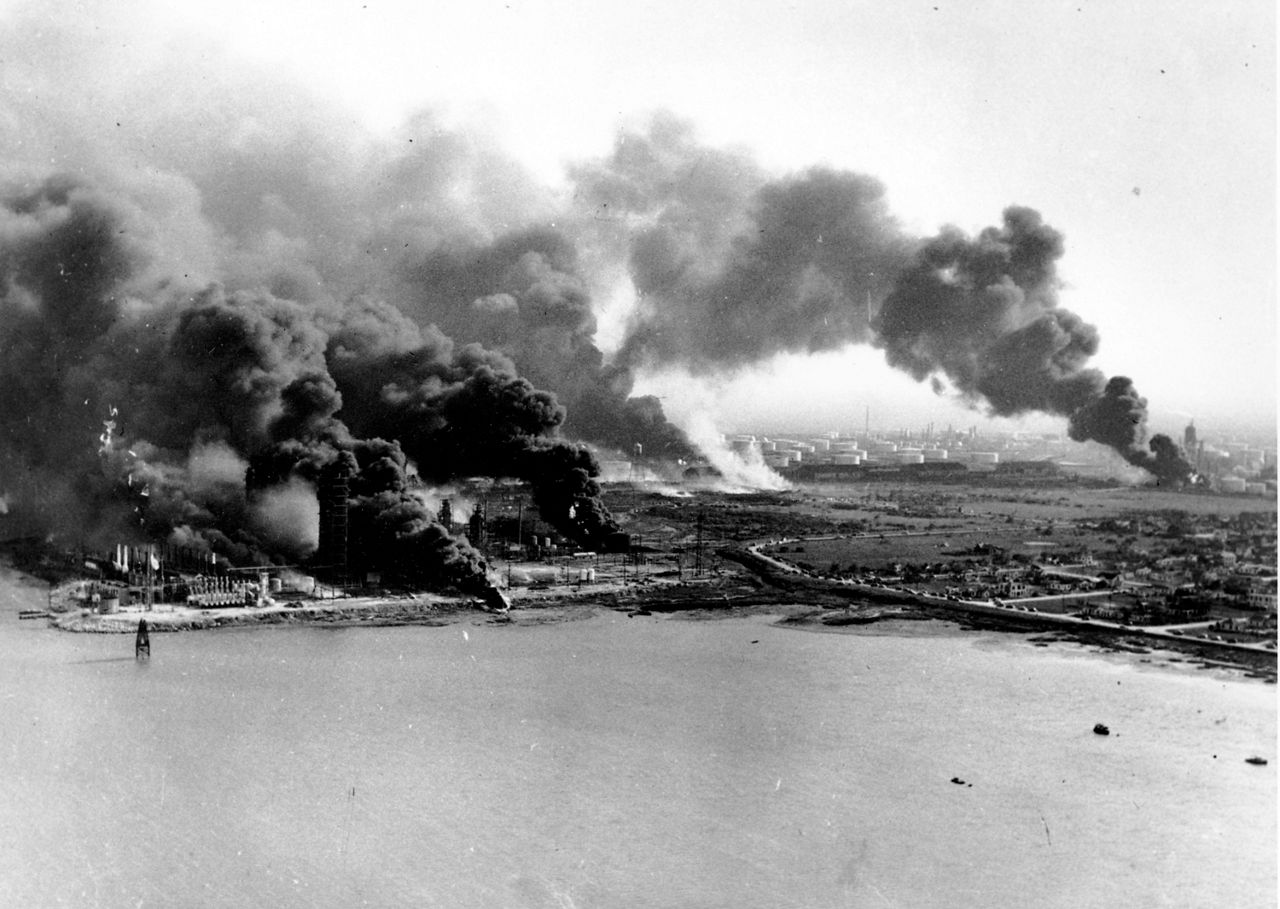
Refineries and oil storage tanks at the Monsanto Chemical Company burn in the waterfront area in Texas City, Texas, on April 16, 1947. (AP Photo)
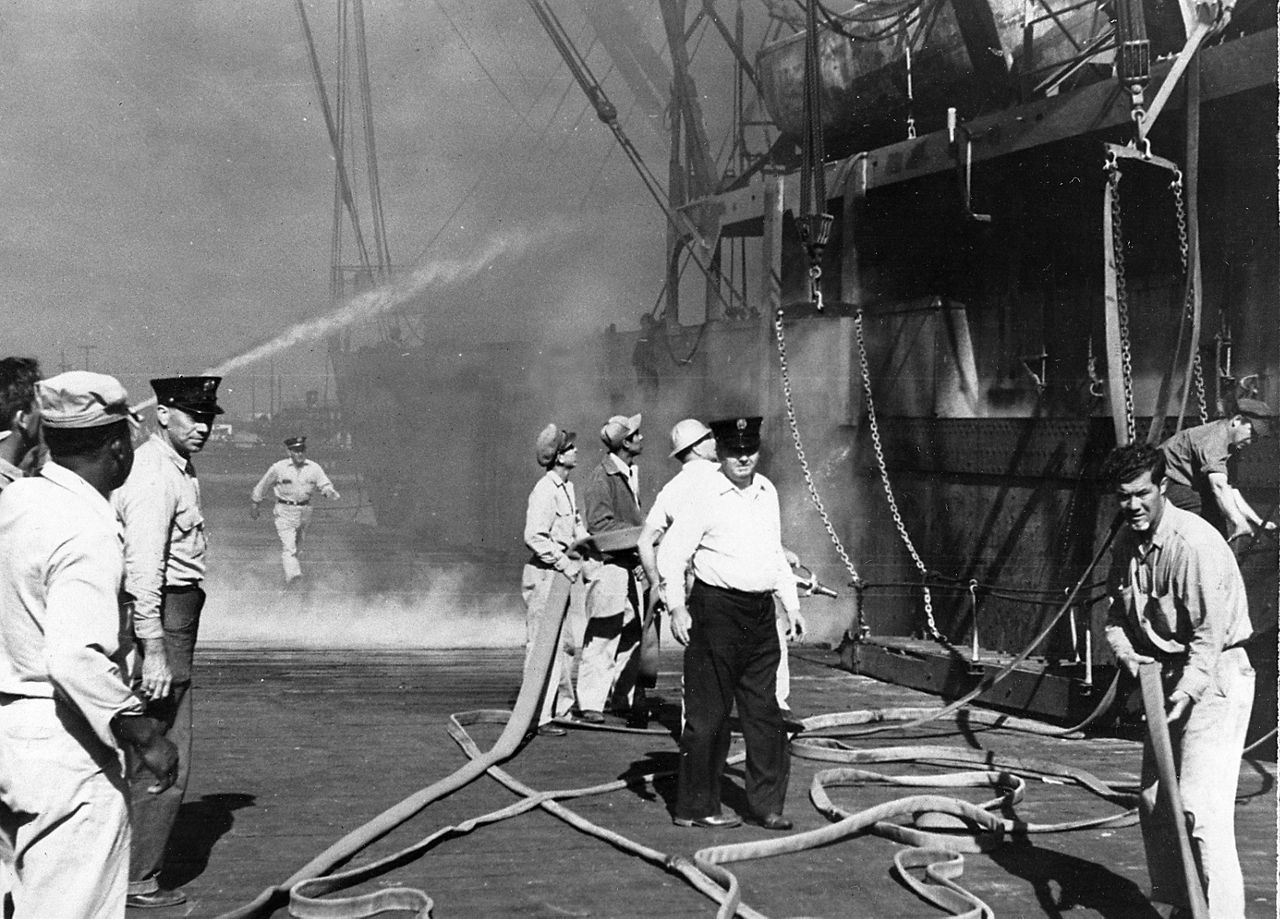
Firemen and dock workers pull fire hoses to the burning French Liberty freighter Grandcamp docked at the port in Texas City, Texas, April 16, 1947. A short time later ammonium nitrate fertilizer on board the freighter exploded, causing a disastrous series of fires and blasts. (AP Photo)
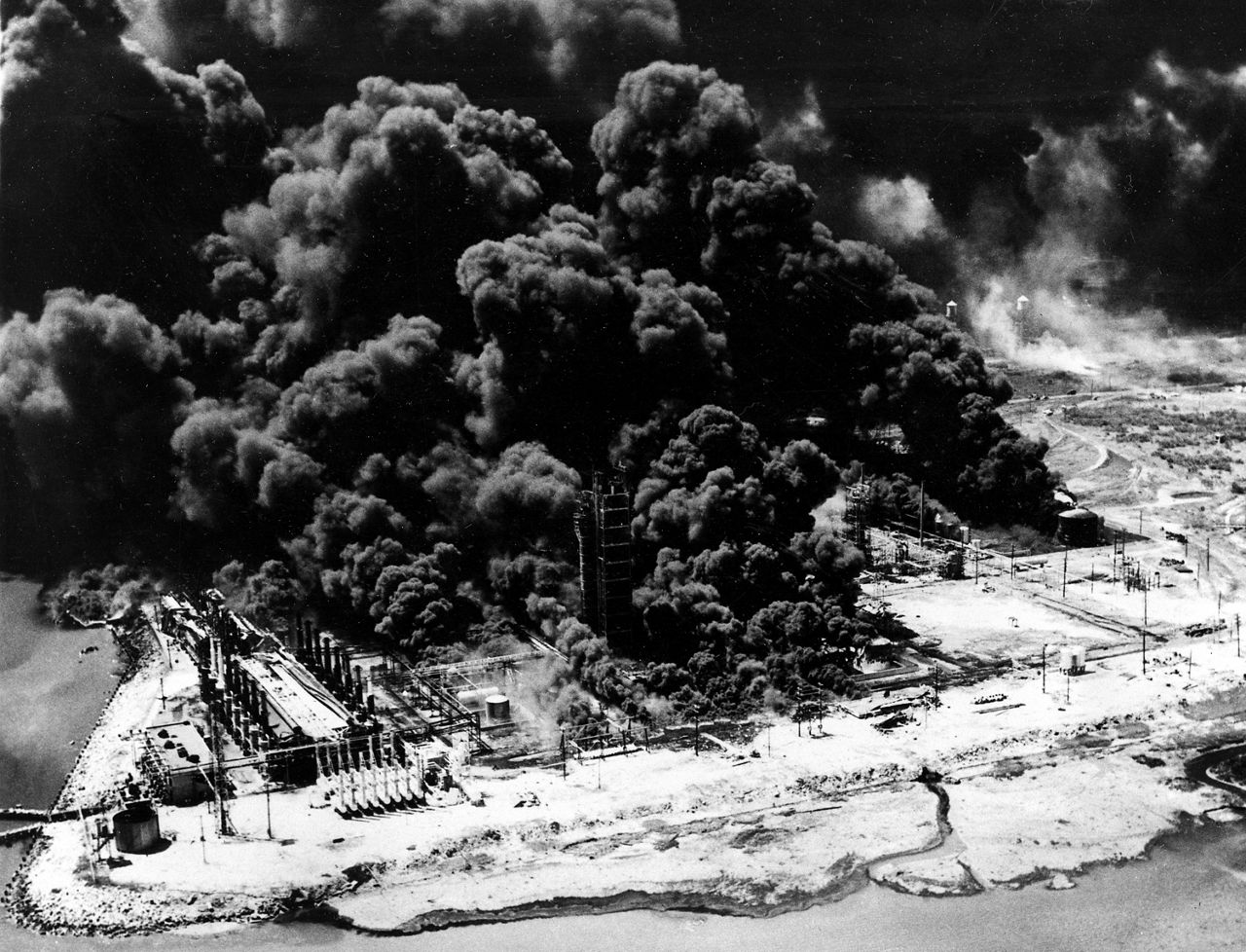
Thick columns of black smoke are rising from the fiercely burning Monsanto Chemical Company, after the explosion of a cargo ship docked nearby at the harbor of Texas City, Texas, on April 16, 1947. The French vessel SS Grandcamp, loaded with ammonium nitrate fertilizer, exploded in a blast that caused a tidal wave and seismographs to register. The disaster left 576 people dead, the number of injured ranged in the thousands. (AP Photo)
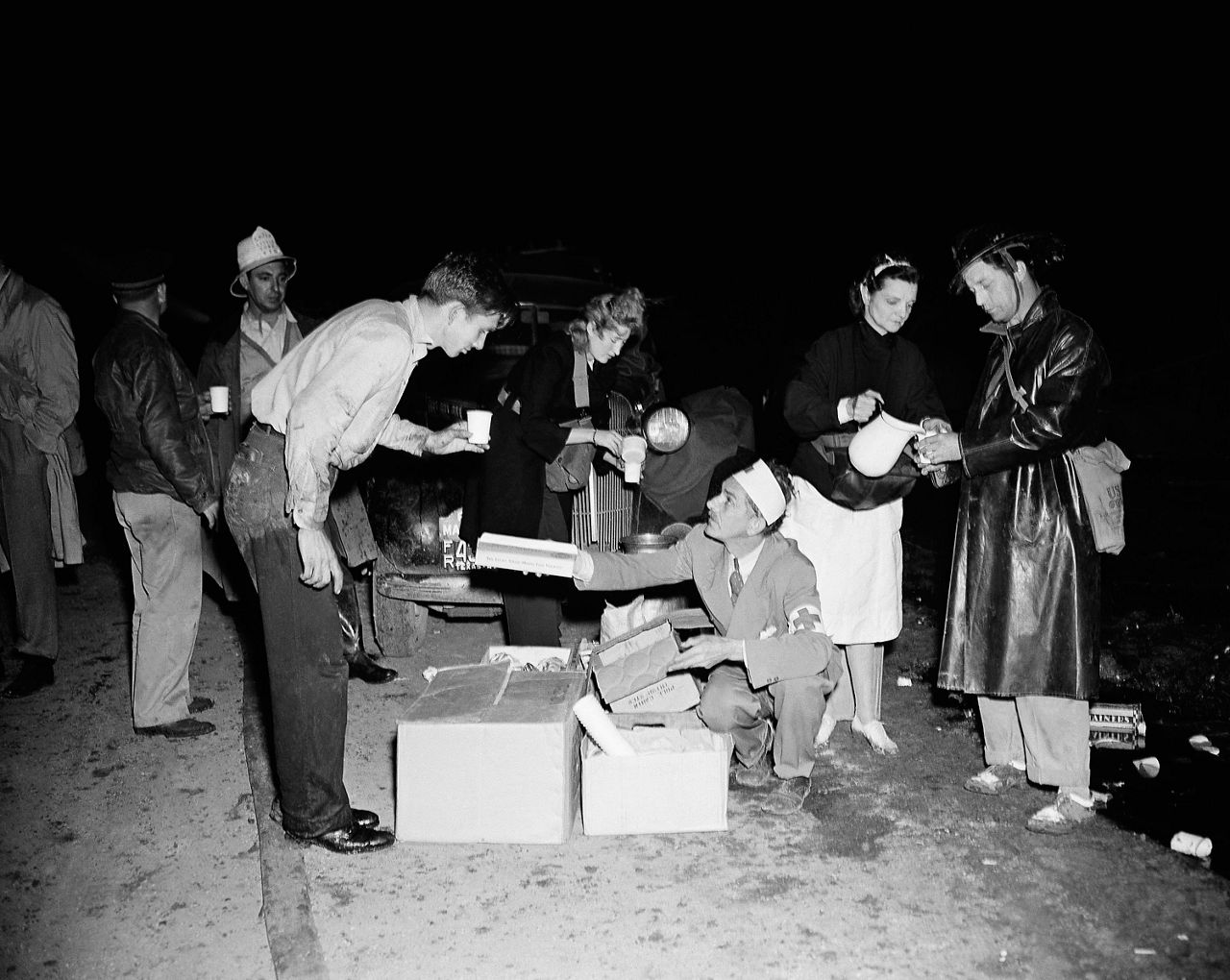
A helmeted Red Cross worker offers cigarettes and coffee to one of the many rescue workers probing the ruins following the disaster in Texas City, Texas, April 16, 1947. Other workers stand about the improvised relief station. (AP Photo/Carl E. Linde)
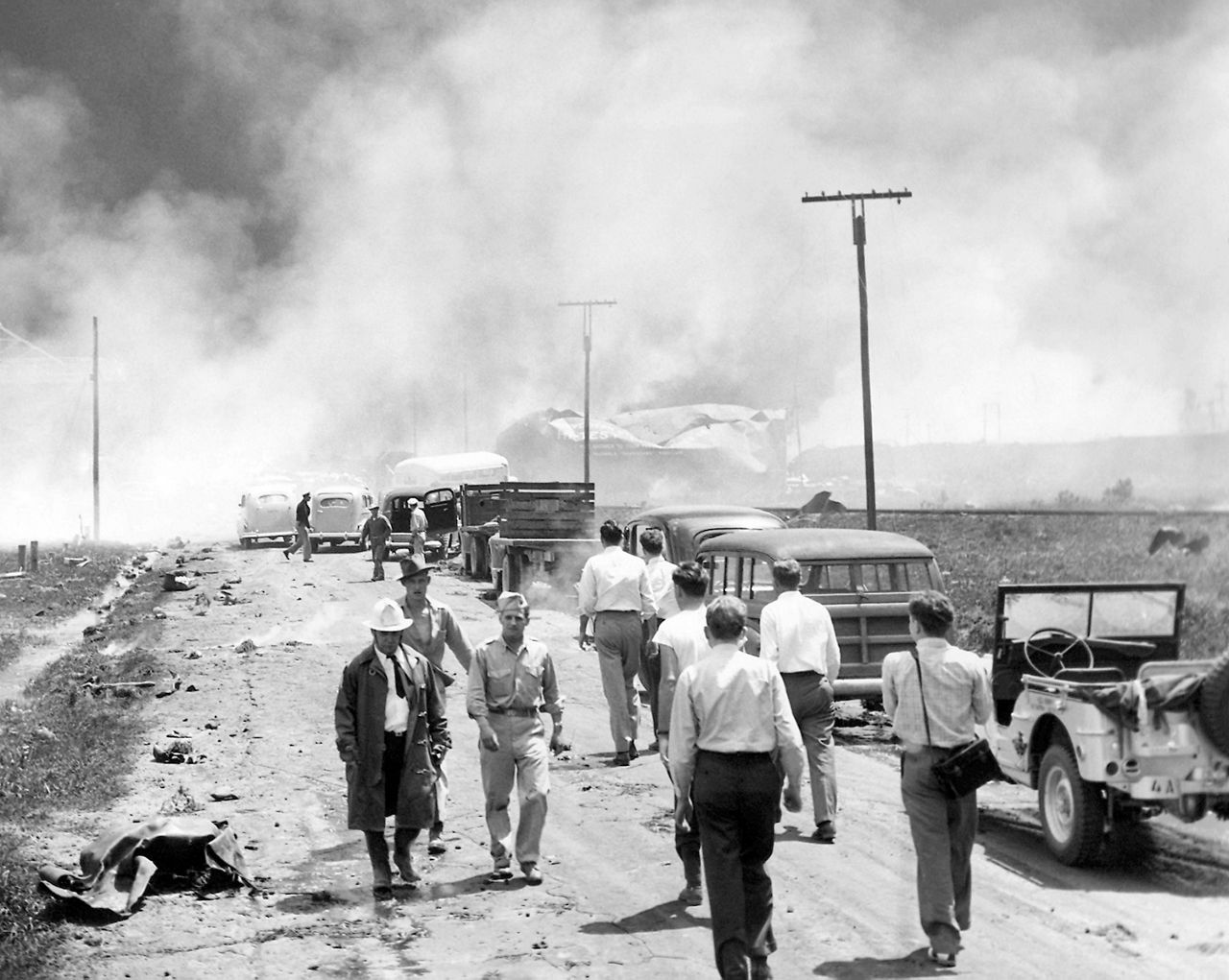
Residents evacuate Texas City, Texas on April 16, 1947. Ammonium nitrate detonated at the Texas City port killing 581 people and nearly destroying the town. It is considered one of the worst industrial accidents in U.S history. (AP Photo)
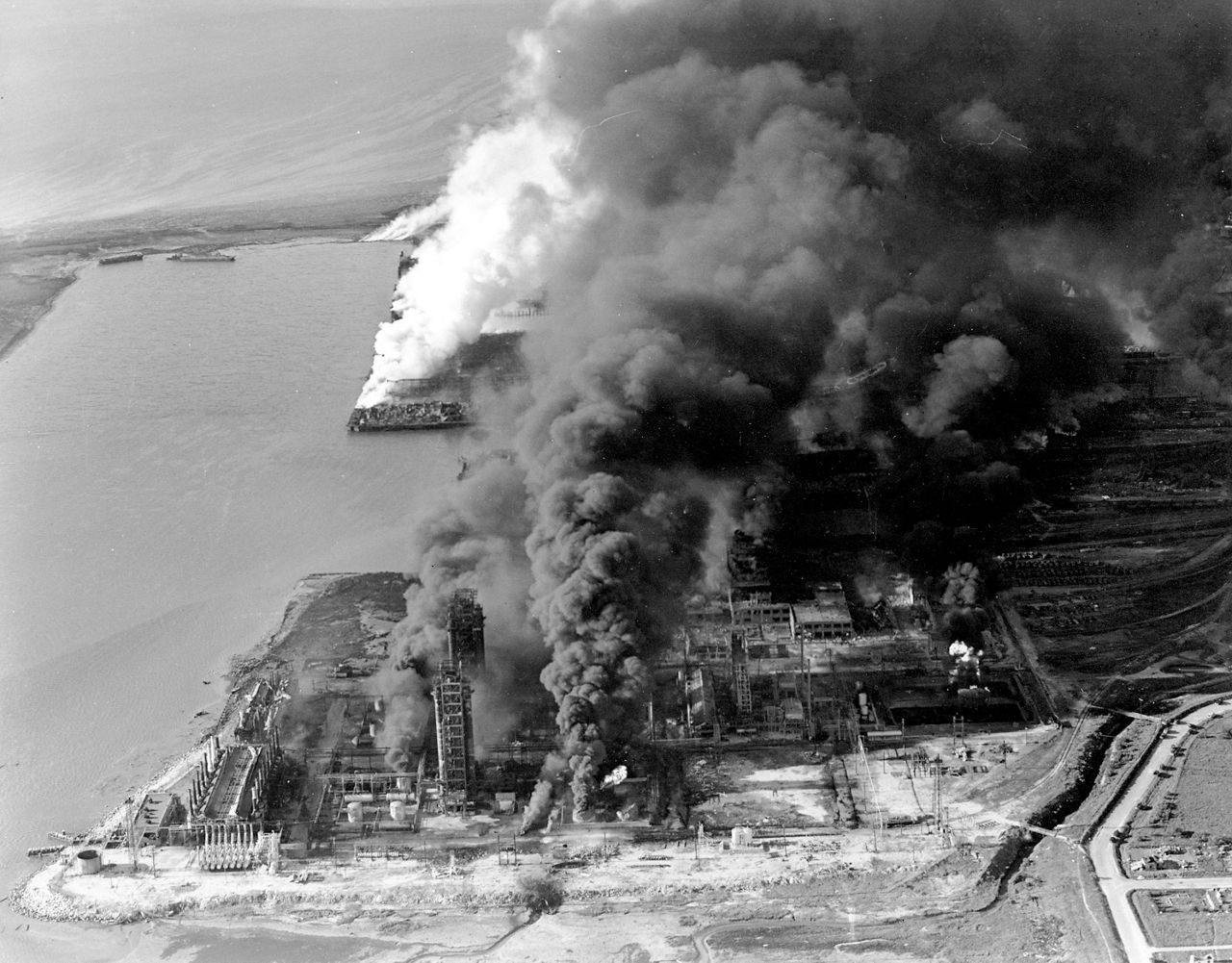
In this April 16, 1947 photo, refineries and oil storage tanks at the Monsanto Chemical Company burn in the waterfront area in Texas City, Texas. Exactly 66 years ago this week, what remains the nation's worst industrial disaster occurred when a series of explosions rocked the huge waterfront petrochemical complex at Texas City, south of Houston. At least 576 people were killed and 5,000 injured. (AP Photo)
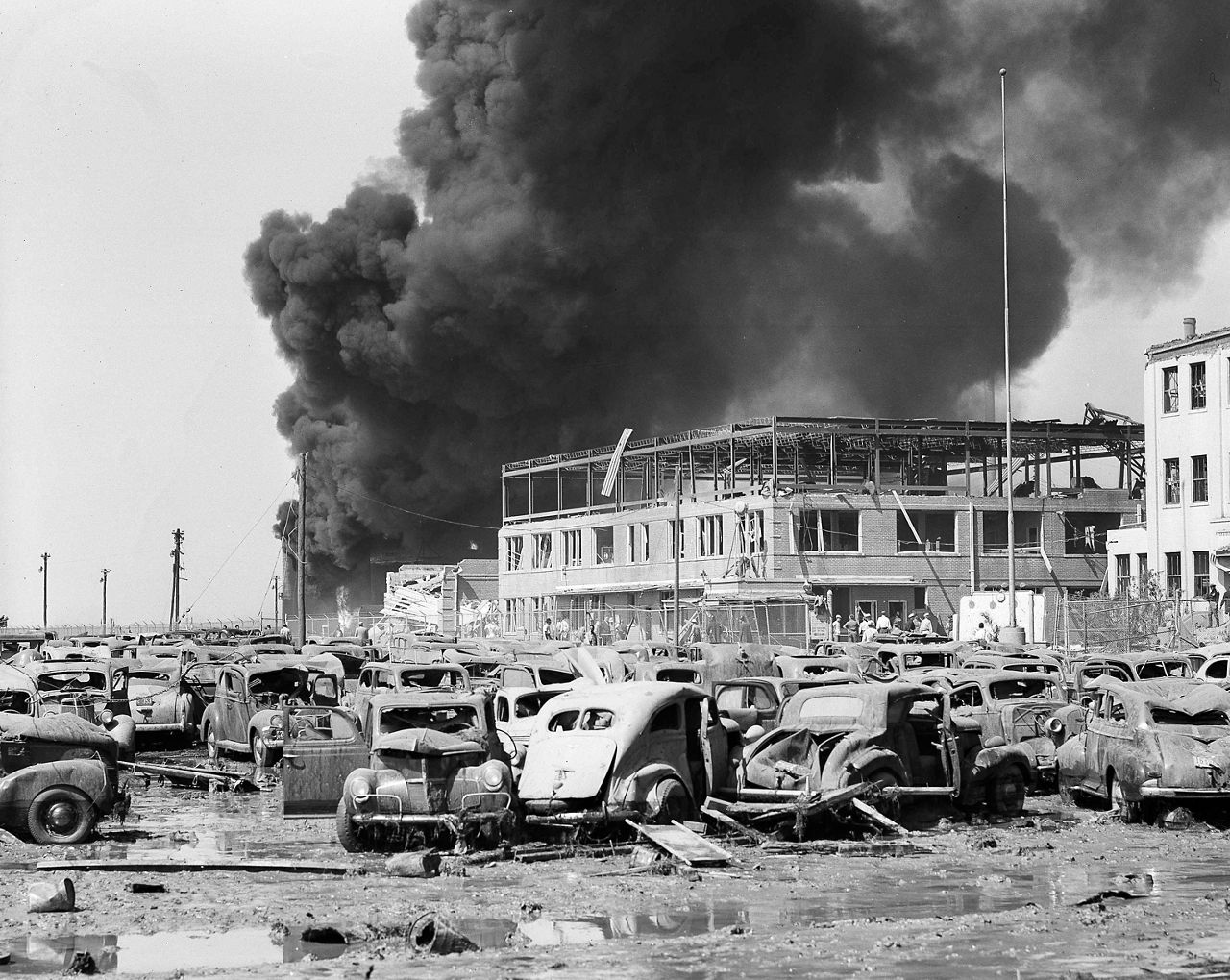
A group of automobiles, reduced to junk and parked some distance from the dock area in Texas City, Tex., is graphic evidence of explosions which ripped through the coastal city of 15,000, April 16, 1947. Blown open by concussion and battered by fallen debris, the cars stand scrambled at odd angles in relation to their former neatly aligned rows. (AP Photo/Carl E. Linde)
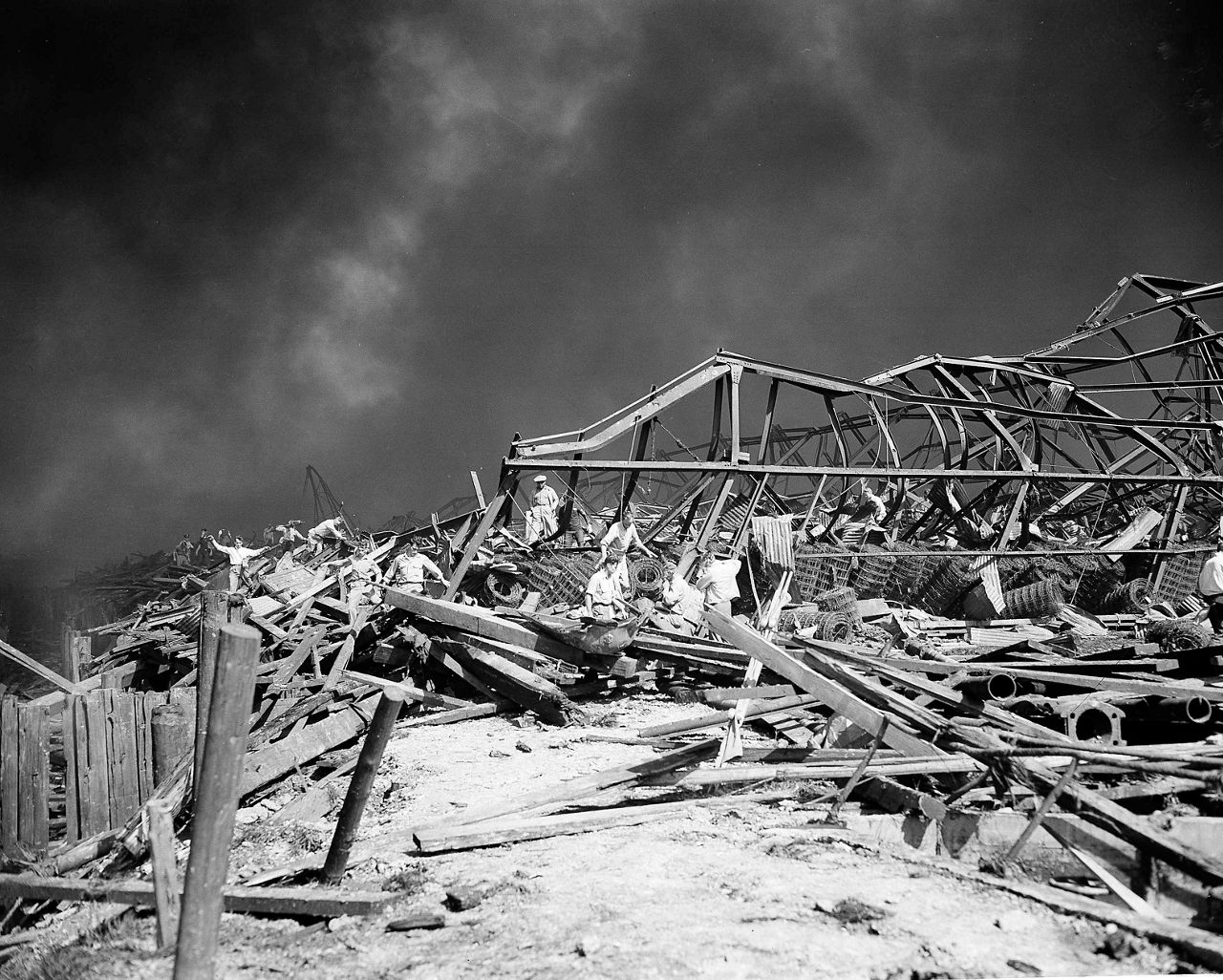
Rescue workers probe through a mass of debris and twisted girders at Texas City, Tex., April 16, 1947, in the grim task of searching for the bodies of victims of the disastrous blast which ripped through the city following the explosion of a ship in the harbor. Smoke blackens the background to make this daylight scene seem like night. (AP Photo)
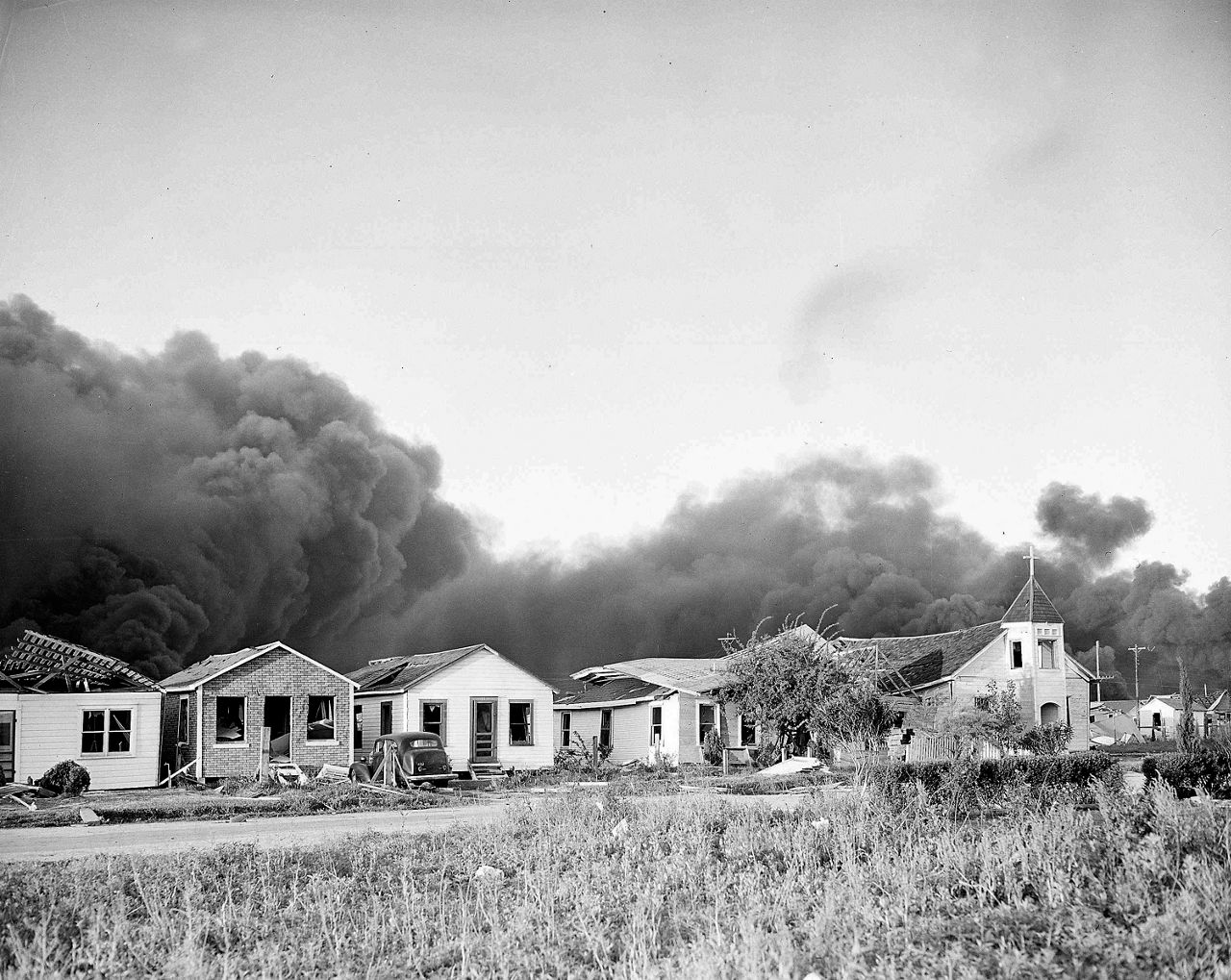
A line of damaged homes along a street in the residential section of Texas City, Tex., stands silhouetted against a backdrop of oily black smoke pouring from burning oil tanks, April 17, 1947. (AP Photo/Harry L. Hall)
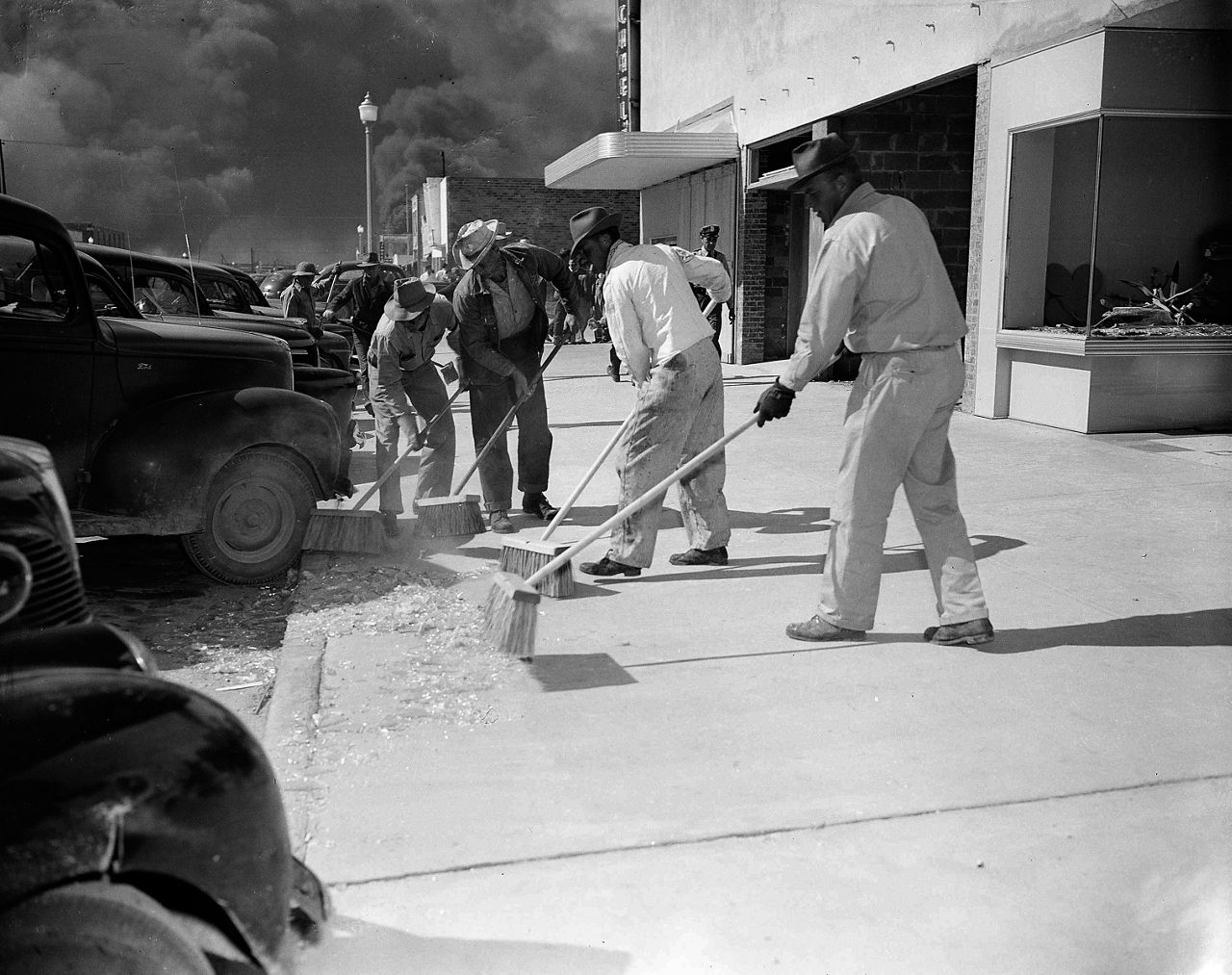
Residents of Texas City, Tex., town on the gulf coast torn by blasts April 16, began moving back after partially evacuating the city, April 17, 1947. They begin the job of cleaning up by sweeping up broken glass from a downtown sidewalk about a mile from the origin of the blast. (AP Photo)
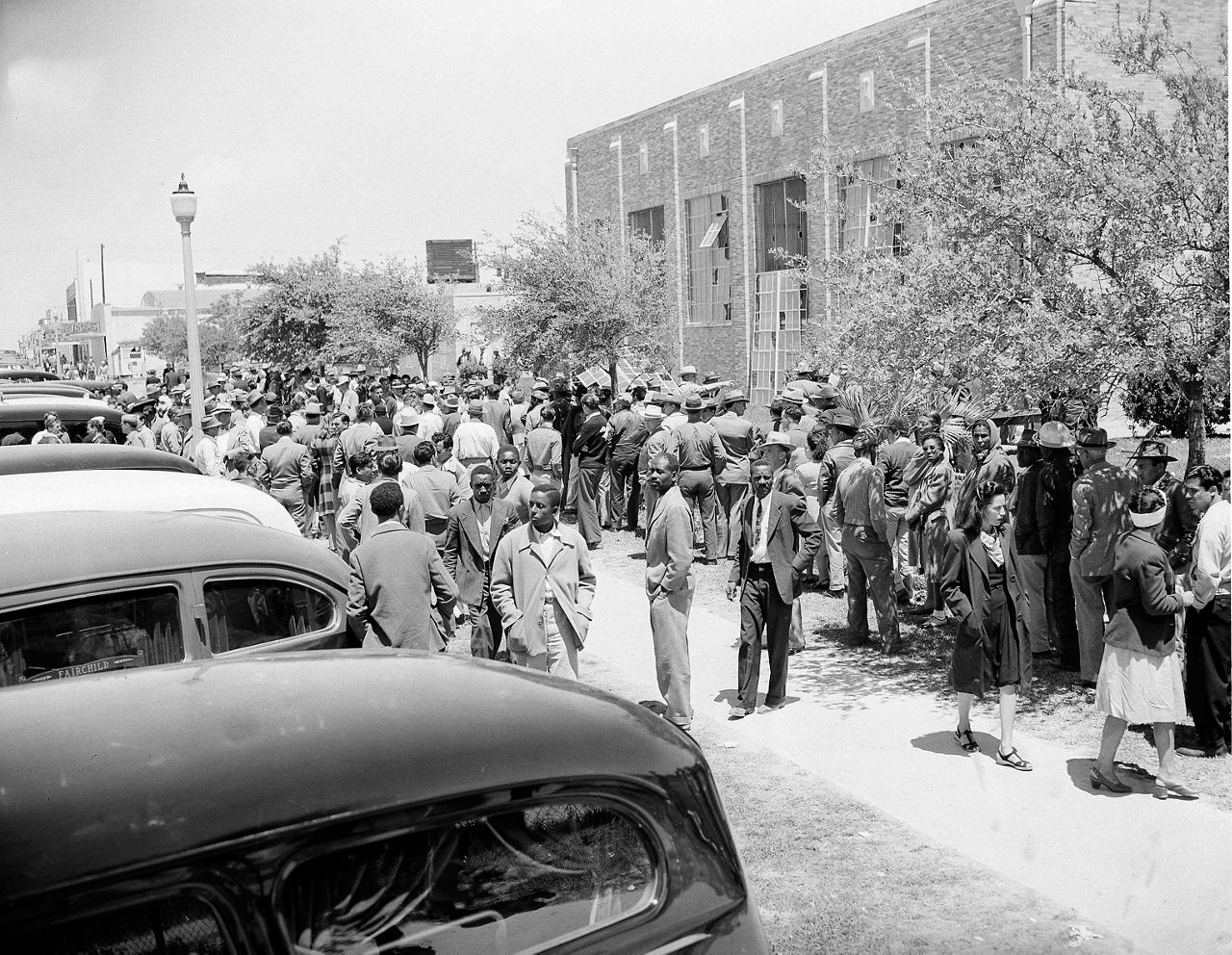
A large crowd gathers around the school gymnasium in Texas City, Tex., April 17, 1947, as they wait their turns to go inside and view bodies of victims of the horrific explosion and fire that began April 16. (AP Photo)
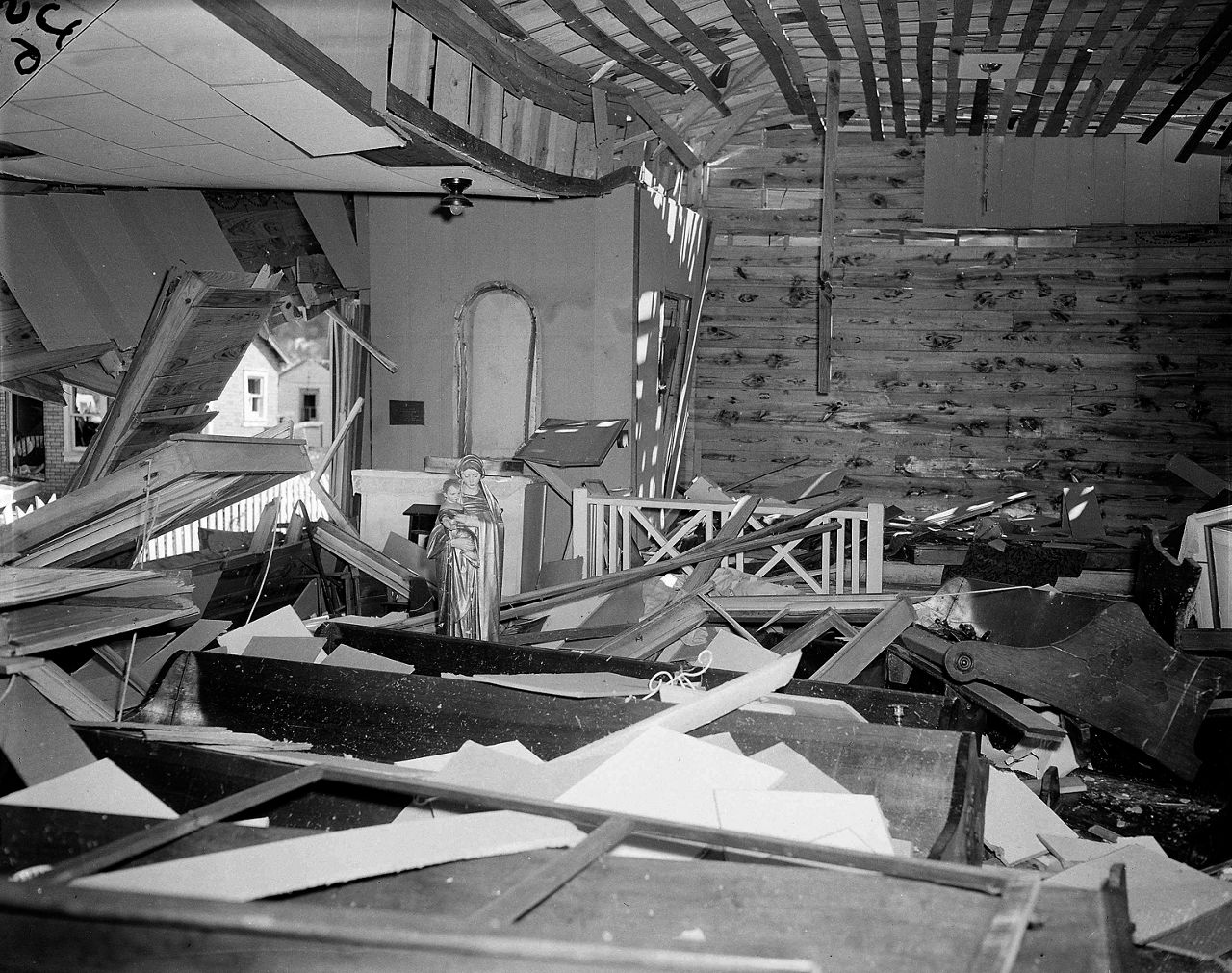
The interior of Our Lady of the Snow Church presented this appearance in Texas City, Tex., April 17, 1947, a day after the horrific explosions. A statue of the Virgin Mary stands undamaged amid the wreckage. (AP Photo)
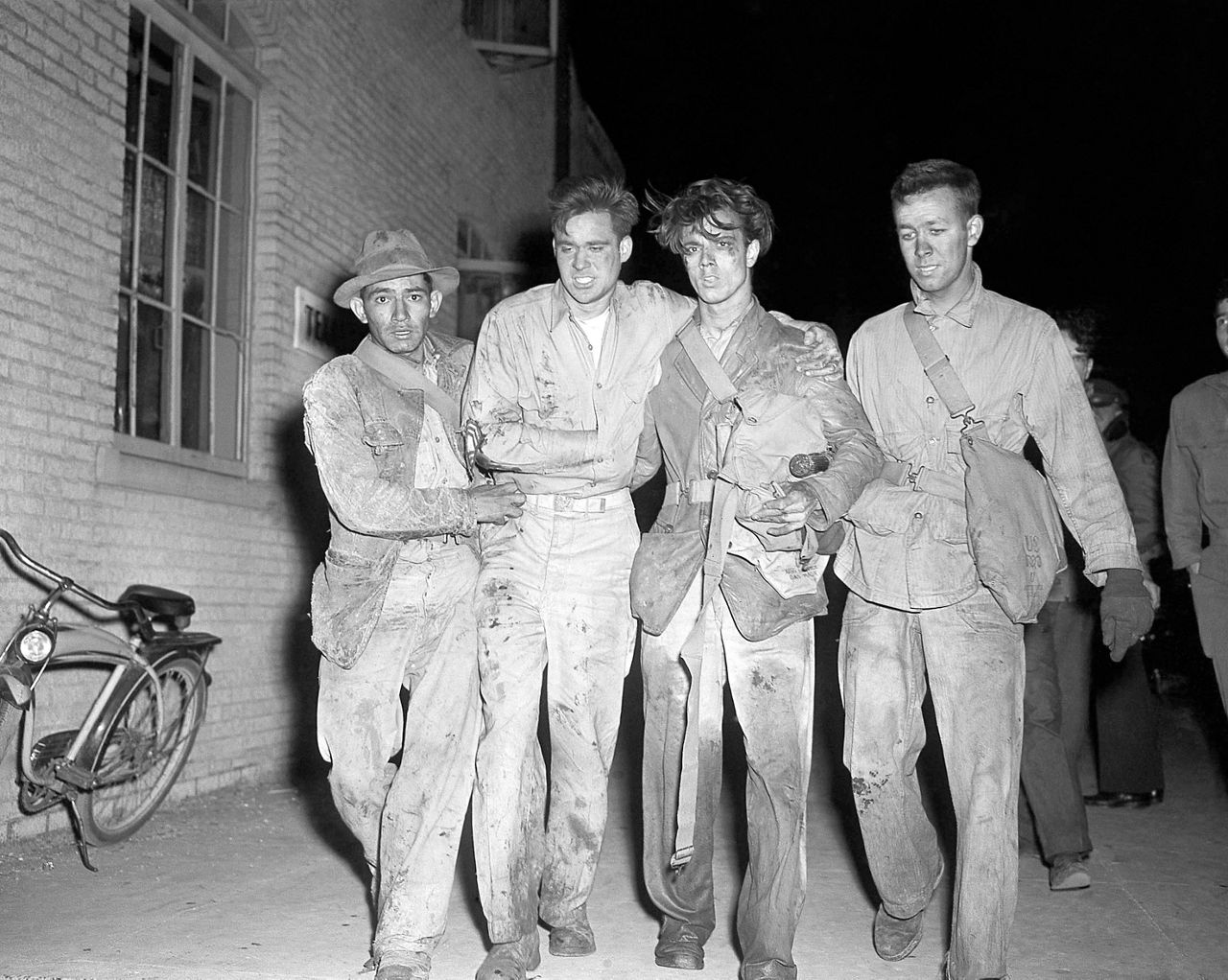
Four dazed and battered rescue workers limp back from the danger area along the waterfront at Texas City, Texas, April 17, 1947 shortly after a new series of blasts and fire swept the area. (AP Photo/William Straeter)
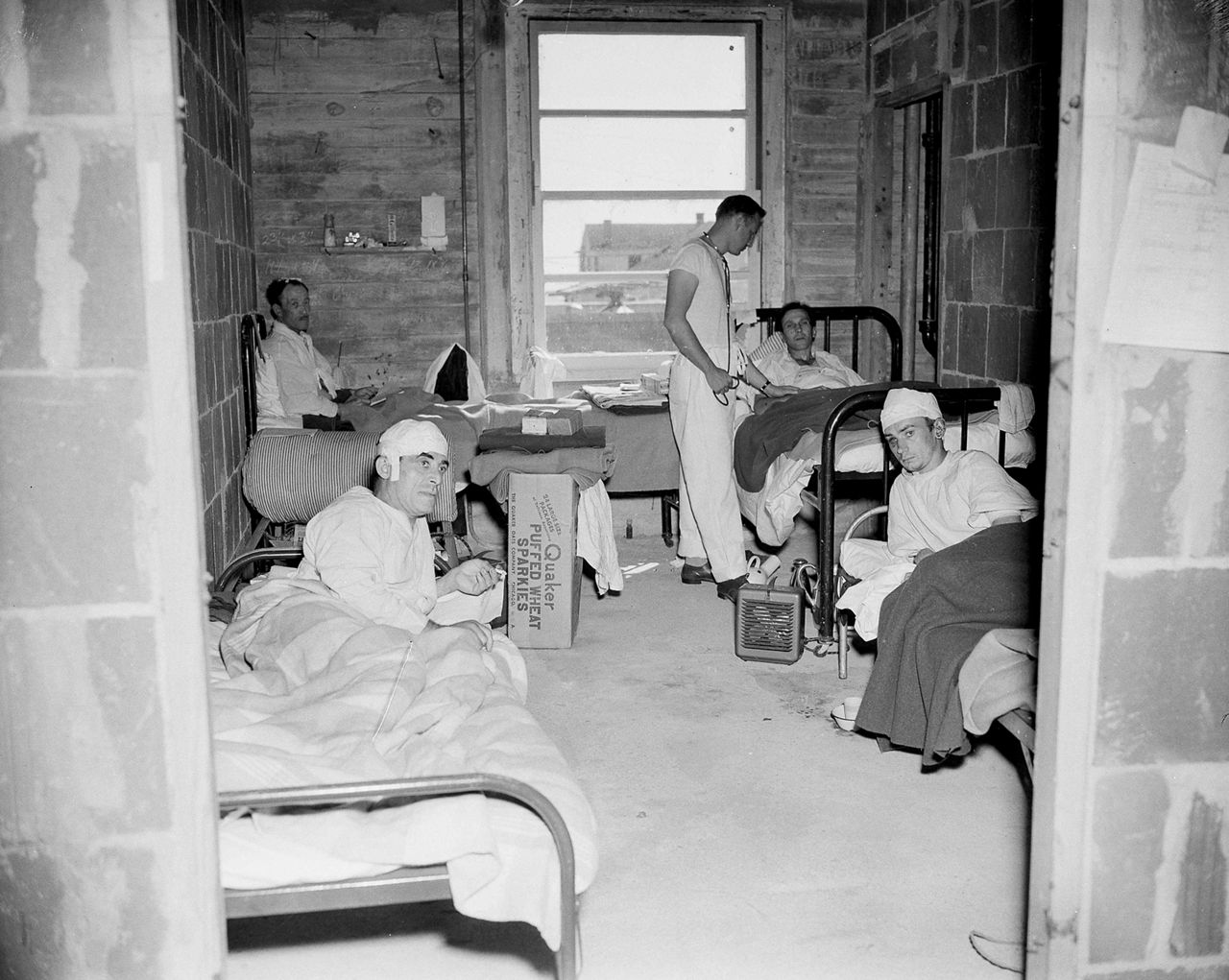
Four crew members, among seven known survivors of the freighter Grandcamp, receive treatment at Texas City, Tex., April 19, 1947. The Grandcamp, a former Liberty ship, caught fire and exploded with its nitrate cargo setting off a series of blasts and fires. In left foreground is Maurice L'Brozec, chief engineer; left background is Julian Gueril; right background is Roger L'Abbe and in right foreground is Guy Saucey. All are French seamen. (AP Photo)



























